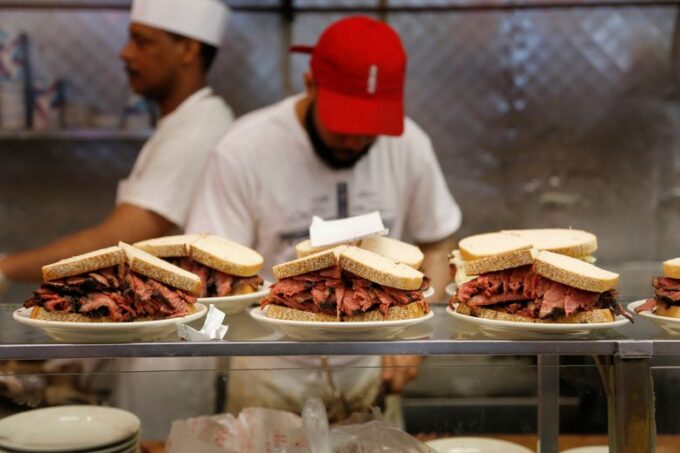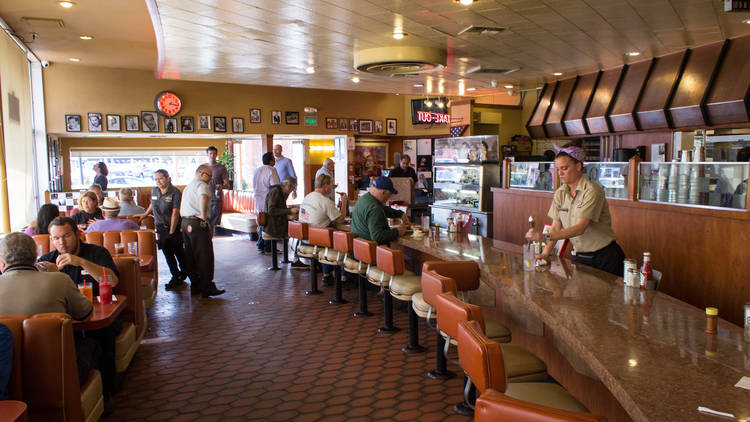America has had such an enormous influence over the culture of the world that many people don’t even realize just how many Americanisms they have incorporated into their personalities. The cheeseburger, the New York Slice, and the hot dog are just some of the many culinary contributions that America has exported, but the iconic eateries behind these inventions didn’t just innovate in the field of food cookery and the like.
It is also essential to recognize that the oft-forgotten aspect of eating out is the overall ambiance of a restaurant. No matter how luscious your offerings are and regardless of how well you market yourself, the thing that will turn walk-ins into repeat customers is décor, and by extension, design. Visit this website to discover how ambiance enhances the dining experience and entices patrons to return for more unforgettable moments.
How then can the modern restaurateur fulfill this all-important requirement? Well, for starters, you can take a look at some of the stories of America’s legendary eateries. Upon cursory inspection, one thing will immediately come to light: the greatest restaurants that were created in the history of the US all had booths in some way, shape, or form.
History

Source: seattletimes.com
Even if we turn back time all the way to the 19th century, Katz Delicatessen was using booths to great effect. You may have heard of this eatery before since it was among the first to offer delectable Jewish cuisine for the very first time. Ever had pastrami on the eye? Chances are, you have Katz to thank for that. While this was by no means the only eatery that was offering cured meats in the Jewish style, it was definitely one of the most popular, and it’s no coincidence that it happened to offer diner booth seating.
Established in 1888, Katz continues to be a highly respected culinary establishment to this very day, often to the point of being considered a critical stop if you are undertaking a New York food pilgrimage! Despite the many changes that it has gone through over its one hundred-and-thirty-five-year existence, one thing has stayed the same: Katz still has booths for you to sit on, and you will be extremely grateful for it when you take your first bite of their unsurpassed Reuben sandwich.
Over on the West Coast, the Brown Derby became an important hub for all manner of celebrities during the 1930s and 1940s. Its food definitely deserves an honorable mention, but its primary claim to fame is its unique and infinitely trendy seating arrangement. Unsurprisingly, restaurant booths have always been a part of this design, and while the Brown Derby closed its doors in the 20th century, it was a firm driver of aesthetic trends that placed great stock in restaurant booths.
Elsewhere in California, Bob’s Big Boy was defining the cuisine of Southern California in a way that continues to influence the city of Burbank and all of its surroundings. Yet again, dining booths take center stage, and unlike the Brown Derby, Bob’s Big Boy is still alive and kicking. Its restaurant booths continue to bring back its 1950s charm, showing that there will always be a place for the old school amid the sea of mediocrity and blandness that is permeating modern restaurant culture.
Something Truly Retro

Source: timeout.com
Now, if you want something truly retro, and dare I say vintage, California has you more than covered, and that’s not just because of Bob’s Big Boy. The iconic Tommy’s Joynt is spoken of in reverential whispers by the San Francisco community, but most people don’t talk about its food as much as they reference its décor.
The vintage signs and old-school memorabilia are tied together by, you guessed it, dining booths. They create a communal atmosphere, one that forces you to actually get up close and personal with people instead of spending the entirety of your life isolating yourself within the confines of a self-imposed social bubble.
All of these old-school diners and eateries might give you the impression that restaurant booths are purely for nostalgia value, but that would only be the case if modern establishments never ended up using them. If you want an example of how these booths can be used in a purely modern context, you need only look at The Smith.
Perhaps one of New York’s trendiest eateries, The Smith is far from the naïve and optimistic eatery that people often associate with restaurant booths. It is not a time machine, nor is it a historical relic. Rather, The Smith was first established in 2007. It describes itself as a casual eatery, yet none of the more casual descriptors apply to it.
Fast food has no place in The Smith since this is a full-on brasserie we are talking about. Brasseries are restaurants that offer a very specific type of French cuisine, and there is hardly any other type of culinary tradition on the planet that is considered to be as elite and high-brow.
Upscale Menu and The Trendy Location

Yet, despite the decidedly upscale menu and the trendy locations, The Smith offers restaurant booths to interested patrons. This just goes to show, modernity and dining booths do not have to be anathema to each other, and they don’t necessarily require a compromise to be used in tandem. It would be fair to assert that the old school and the new way can very easily go hand in hand, and the storied tradition of culinary innovation in America serves as a prime example of this.
The restaurateurs of today can skip the experimentation and instead, just go with how things have been done for well over a century. The results will be surprisingly profitable, and they really need to be seen to be believed.






